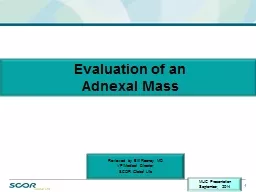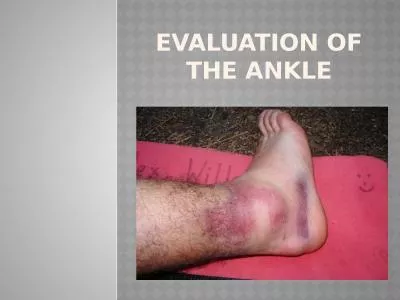PPT-1 Evaluation of an
Author : aaron | Published Date : 2019-12-07
1 Evaluation of an Adnexal Mass Reviewed by Bill Rooney MD VPMedical Director SCOR Global Life MUC Presentation September 2014 Agenda Case examples Adnexal anatomyphysiology
Presentation Embed Code
Download Presentation
Download Presentation The PPT/PDF document "1 Evaluation of an" is the property of its rightful owner. Permission is granted to download and print the materials on this website for personal, non-commercial use only, and to display it on your personal computer provided you do not modify the materials and that you retain all copyright notices contained in the materials. By downloading content from our website, you accept the terms of this agreement.
1 Evaluation of an: Transcript
Download Rules Of Document
"1 Evaluation of an"The content belongs to its owner. You may download and print it for personal use, without modification, and keep all copyright notices. By downloading, you agree to these terms.
Related Documents














